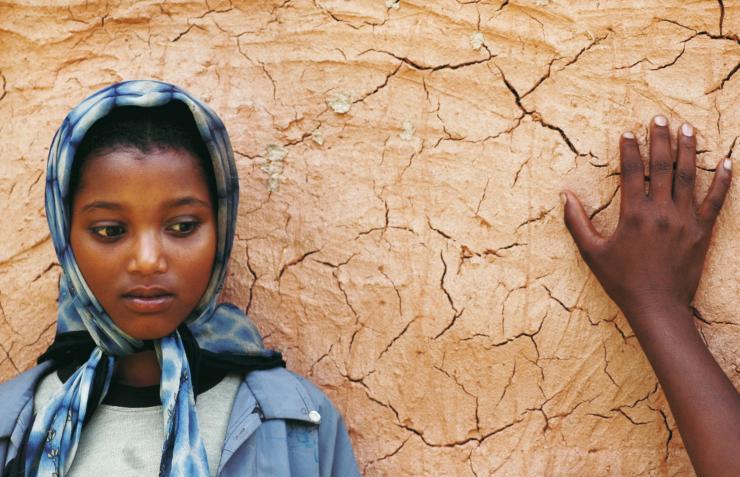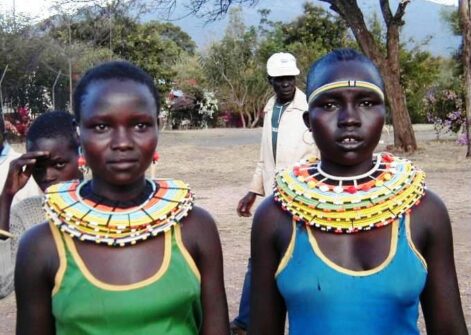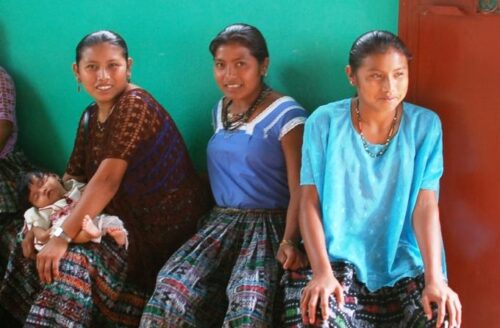Precocious Marriages. Increasing Due to Crises.

The terrible drought which – for the third year in a row – plagues the Horn of Africa region and the rise in food prices caused by the war in Ukraine, have led to an increase in child marriages in several
countries of the region.
The alarm was raised by UNICEF, the United Nations Children’s Fund, which citing Ethiopian sources, reports that in the districts most affected by the famine, the number of girls forced to marry before the age of 18 has increased by 119% between January and April 2022 compared to the same period of the previous year. Once again, poverty and impoverishment are confirmed among the main causes of this phenomenon. “Due to the drought, the value of the dowry (in cash, food and livestock that is paid by the future husband’s family to that of the bride, ed.) is decreasing. This means that, in order to survive, families will consider the possibility of giving more of their daughters in marriage”, UNICEF reports.

Djibouti. Afar Girl. Around the world today, there are over 650 million girls and women who were married as children. (Photo Andrea Semplici).
Across the region, the rate of pre-adolescent girls forced to marry (a ritual that, in many countries, is preceded by the practice of genital mutilation) is growing “at a worrying level”, the United Nations agency warns. The famine is also causing the failure of another factor of protection for girls: school. In Ethiopia, Kenya and Somalia, the number of children who may drop out of school is rising from 1.1 to 3.3 million, putting huge numbers of teenage girls at risk. “We are seeing alarming rates of child marriage and female genital mutilation across the Horn of Africa, with some destitute families arranging the marriage of girls as young as twelve to men who are more than five times their age”, commented Andy Brooks, UNICEF regional consultant.
In Kenya, 14 of the 23 districts most affected by drought are also those where the highest rates of female genital mutilation are recorded: “These girls run the risk of undergoing the ‘cut’ at a very young age, while their families prepare them for marriage”, warns the UN agency. This new crisis – adding to the consequences of the Covid-19 pandemic – risks nullifying the efforts made in recent years in the region to combat child marriages, the incidence of which had decreased from 70% thirty years ago to 40%. According to UNICEF estimates, around 12 million girls get married every year before they reach the age of 18 (equal to 21% of the total number of brides). Around the world today, there are over 650 million girls and women who were married as children.

Kenya. Pokot girls. In Ethiopia, Kenya and Somalia, the number of children who may drop out of school is rising from 1.1 to 3.3 million, putting huge numbers of teenage girls at risk. (Photo K. Zebik).
Countering this phenomenon is possible, as evidenced by the progress made between 2010 and 2020, which made it possible to save 25 million girls and adolescents. Only in South Asian countries did the incidence of early marriages decrease from 49% to 30%. Forecasts for the future, however, were not rosy even before the pandemic: due to the demographic increase in some continents where the incidence of the phenomenon is particularly high (such as sub-Saharan Africa), UNICEF estimated that by 2030, a further 100 million teenagers would have been forced to marry before they came of age.
The economic crisis unleashed by Covid-19 and the decision by many governments to close schools for months – in some countries even for more than a year – have created conditions that have placed additional 10 million girls at risk.

Indian girls. Only in South Asian countries did the incidence of early marriages decrease from 49% to 30%. (Photo Unicef)
One case in point is Bangladesh. In March 2020, to limit infection from Covid-19, the government decided to close schools and, for 18 months – even when all other activities in the country had recommenced – children and young people were forced to stay at home. According to some estimates, this situation, combined with the impoverishment of many families, would have increased early marriages by 13%. Although there are no in-depth data to assess the situation in the country as a whole, some studies conducted by local NGOs shed some light on a worrying situation: research by the Manusher Jonno Foundation, conducted in a third of the districts of Bangladesh, found at least 14,000 precocious marriages in the first months of the pandemic alone. In the Rajshahi district, more than 6,500 female students were forced to marry while schools were closed. In the districts of Khulna, Kurigram, and Bagerhat the girls who did not return to their desks when the schools reopened numbered about 9,000. These numbers almost certainly represent only the tip of the iceberg of a much wider phenomenon.
Another example is that of Jordan, which has published official data on the phenomenon of early marriages, showing an increase in incidence from 10.6% in 2019 to 11.7% in 2020. This increase also affected the refugee camp of Zaatari where, according to the latest estimates, there are about 80,000 Syrian refugees.

In Guatemala, almost 30% of girls bond in a more or less formal way before they come of age to a man, often several years older than them.
The only continent where in the last 25 years there has been no progress in the fight against child marriage, is Latin America and the Caribbean. Here the often-informal nature of unions (characterized by coexistence without legal registration) contrasts with the more formalized practices found in other parts of the world and therefore makes them less visible. However, the rate of early unions is significant and involves one in four minors and 10% of children under the age of 18. In countries like Guatemala, almost 30% of girls bond in a more or less formal way before they come of age to a man, often several years older than them. The phenomenon is more present in the poorest and least educated sections of the population, where a union with a wealthier man, even if only apparently, may seem like a good strategy to get out of the condition of social exclusion. But it is precisely the informality of unions that can bring additional problems to the more vulnerable component of the couple. Many unions end after a few months because the man moves away and often does not recognize the children born of that relationship. (Open Photo: Pedro Pablo Hernández)
I.Sesana, R.Panuzzo, P.Ferrera
Terre des Hommes
.
.



